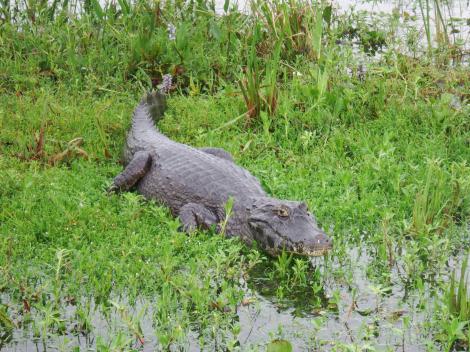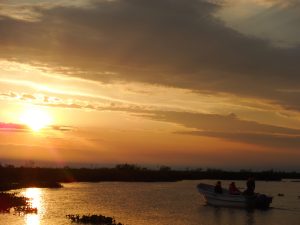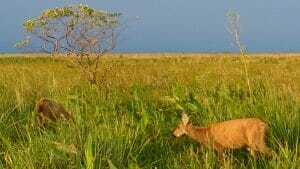Argentina’s Ibera wetland region
 by Tom Shearman on 14th April, 2016
by Tom Shearman on 14th April, 2016

Argentina’s Ibera wetland region
Tom has been exploring the remote north-eastern reaches of Argentina’s Ibera wetland area, part of our fantastic wildlife holidays section.
Here he describes his trip to Irupe Lodge – please contact us for more information – and watch his short video of the wildlife highlights.
He writes:
“250ml of rain fell last week and more than a thousand millilitres last month – and it’s not even the rainy season!”
Guides at Ibera wetlands were comparing meteorological stats, and sharing them, and their concerns, with us
“The Ibera lake is 53km squared, usually two metres deep. It’s currently about four metres deep, and if it keeps raining like this, the birds will start to die.”
Located in the far north east of Argentina, near Iguazu Falls and the borders with Paraguay and Brasil, Ibera wetlands life is defined by water.
This mighty basin is home to a great many birds, caiman, fish and deer, and the waters feed the river Corrientes to the south, then the Parana, finally arriving (as did we later) into Buenos Aires.
When is the best time to visit Argentina’s Ibera Wetlands?
The Ibera Wetlands are a year-round destination but there are seasonal variations.
The best times to visit are the autumn months of April and May and spring from September until November.
Ibera Wetland Seasons
April and May bring pleasant conditions, with daytime temperatures dropping down to the low 20s (70-77 degrees Fahrenheit) and little rain.
June to August is winter with cooler temperatures in the high teens (Celsius) and plenty of rainfall. There is still a lot wildlife to see but be aware it’s the low season. The bonus means fewer people around.
September to November are fairly dry but a little warmer than April and May. The spring weather kickstarts the breeding season, making it an excellent time for wildlife watching. The flora is also at its most colourful in this period.
December through to March is summer and temperatures often touch the low 30s (80-95 degrees Fahrenheit). There is little rain, albeit exhilarating storms may develop.
Bird migrations happen between September and April. Any of those months are good for bird watching, seeing colourful birds migrate over the beautiful waters.
Water water everywhere
Driving in on a bright red, muddy road, we saw Roseate Spoonbills, deadly snakes, herons, capybaras and sunning caiman.
It was hot and humid in the day, the sky seemed to drink up he receding waters and thrown them back down on us at night. It may have cancelled the Brasil v Argentina World Cup qualifier, but the electrical storm we saw that night was incredible.

Sunset, Irupe wetlands, Argentina
The water around the lodge and our cabin teemed with fish, snakes and caiman, and all the staff was very relaxed about it all. And so were we, until we spotted a five feet snake by our cabin one night.
It turned out to be some disused cable.
The lodge itself seemed to seep into the lake as the water rose, and then pulled itself out just before being inundated.
I almost stood on a four-foot long lizard and did stand on a frog whose jump landed right under my falling foot. It made me think back to the days when I’d strimmed an amphibian to shreds, cutting the back lawn.
Fantastic wildlife
Capybara, the world’s largest rodent, are everywhere to be seen, with families, marauding males and fighting females all evident.
Caiman, black howler monkeys, armadillos and deers all abound, too – and that’s before mentioning the birdlife.

Marsh deer, Irupe, Argentina
The strange-tailed tyrant is a draw for birdwatchers around the world.
Many breeds of starlings, conebills, pipits, flycatchers, woodpeckers, toucans, hummingbirds, parakeets, Jacana, hawks, eagles and more bring people, ahem, flocking to the area.
Why travel to Ibera?
Ibera is a hard place to get to, and a hard place to leave, yet its laidback lodge and people, and even the wildlife, lend it a magical attraction.
You can sit on the lodge terrace, eating lovely food and sipping lovely wine, while a caiman fishes in front of you, or capybara pose for the camera.
It makes the perfect addition to an Iguazu, taking a tour via Jesuit ruins, or any visit to the north of Argentina.
From Buenos Aires, it’s a 9-hour bus journey to Mercedes, then a 2.5 hour transfer into the lodge.
Contact us for more.
Share







